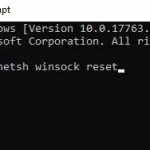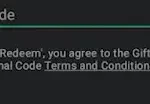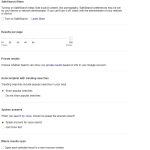Ever wondered why your laptop’s battery keeps going down even when it’s plugged in? There are a bunch of reasons why this might be happening.
Let’s dive into some typical issues like bad power sockets, old batteries, overheating, nasty malware, and operating system glitches that could be eating up your laptop’s battery life, even with the charger connected.
Table of Contents
Why Your Laptop’s Battery is Draining While Plugged In?
Power Socket Problems
One big reason your laptop might not be charging is a problem with the power socket. Your laptop needs a stable power source to juice up the battery. If the socket’s not working right, or the connection’s not tight, the power can’t flow properly to recharge the battery. This can lead to your laptop using up all its battery and shutting down, even though it’s plugged in.

Try out a different socket or plug something else into the same socket to see if it’s working. If you’re having trouble with more than one outlet, it might be a circuit breaker issue or something wrong with the wiring.
It’s also a good idea to check your power adapter. Wiggle the cord a bit while it’s plugged in to see if the connection’s loose. If your outlet or adapter isn’t working right, it could be the reason why your laptop isn’t charging and the battery’s draining fast. Fixing these issues can help get a stable power supply to your laptop.
Power Adapter Issues
The power adapter is key in making sure your laptop gets the right amount of power. If it’s damaged, old, or overheating, it might not be giving your laptop the power it needs. This can lead to your battery draining faster than the adapter can charge it.
Look out for error messages about the AC adapter not being recognized, or if the charging light is flickering or not on at all. These signs can mean there’s a bad connection. Remember, adapters usually last for about 1,000 charges before they start to lose their oomph. So, if yours is pretty old, getting a new, genuine adapter could solve your battery issues.
Battery Woes
Batteries wear out over time. After lots of charging cycles, they just can’t hold a charge as well as they used to. This means they might not charge fully while plugged in and drain quicker. If your battery’s overheating or your laptop shuts down unexpectedly, it could be a sign of a faulty battery.
Batteries can also develop problems if they’re charged too often without being fully drained first. This messes with their ability to gauge power levels. Letting your battery run out completely if you’re not using it for a while can also harm its charging ability.
If your laptop shuts down suddenly when unplugged, can’t hold a charge, or gets really hot, it might be time for a new battery. Replacing it after 2-3 years of use can often fix these quick draining issues.
Overheating Issues
When your laptop overheats, it can drain the battery fast, even when it’s plugged in. Laptops usually shut down automatically if they get too hot to prevent damage. But this leads to the battery draining quickly.
Overheating can happen if the vents are blocked, like when you use your laptop on a bed or other soft surface that stops air from flowing. It can also be due to internal fans not working properly or too much dust inside your laptop.
If your laptop keeps turning off even when it’s plugged in, check for dust or blockages in the vents. Cleaning them out and making sure your laptop’s on a hard, flat surface can help. If you’re still having trouble, it might be time to get a technician to check out your cooling fans.
Hardware and Software Glitches
Sometimes hardware problems can cause your battery to drain quickly. This can happen when you add new components or if there’s a bad driver update. Your laptop might crash or shut down suddenly because of these conflicts.
If you’re getting error messages or your laptop turns off before you can figure out what’s wrong, look back at any new hardware or drivers you’ve installed. Try rolling back any updates or removing new components to see if that helps.
Malware Menace
Malware can be another reason for your battery draining fast. It can run in the background and take a while to cause noticeable problems. You can get malware from things like infected USB drives, dodgy websites, or public WiFi.
Signs of malware include your laptop turning off at certain times or when using specific apps. This can happen if you don’t have good antivirus protection.
Running antivirus scans regularly can help catch malware early. Removing any malware you find can stop your battery from draining weirdly and keep your laptop stable. Always keep your antivirus updated and check any external drives or files before opening them.
Operating System (OS) Troubles
If you’ve ruled out other issues, the problem might be with your operating system. OS failures can lead to your laptop shutting down suddenly.
To check for OS issues, reboot and go into CMOS Setup mode. But if you’re not sure what you’re doing, it’s best to leave this to a pro. They can check for any OS problems that might be causing your battery to drain quickly.
Charging Pin Problems
The charging pin, or DC jack, is where you plug in your charger. If it’s damaged or loose, the charger might not connect properly, interrupting the power needed to charge the battery.
If your laptop’s battery is draining fast and shutting off, check the charging port for damage or loose pins. Wiggling the charger can help you spot a bad connection. If there’s an issue, a repair technician might need to replace the charging port to get your laptop charging right again.
What to Do When Your Laptop’s Battery is Draining While Plugged In?
Start with the Basics: Check Your Connections
First things first, make sure everything’s connected right. Plug the AC adapter all the way into the outlet and turn on the power. Then, ensure the cable’s snugly connected to your laptop’s charging port. Give the cable a little wiggle at the laptop end to see if the port’s acting up.
Try charging something else from the same outlet to see if the power’s flowing like it should. Also, take a look at both ends of your charging cable. Look out for damage or bent pins that aren’t connecting properly.
Make sure everything’s plugged in tightly, and switch outlets if you need to. Getting all the connections right is crucial for a steady power flow to your laptop battery.
Unplug What You Don’t Need
Laptop batteries also power stuff you plug in, like USB drives, phones, or webcams. If you’re not using these, unplug them to save battery. And turn off Bluetooth if it’s not needed – it can be a real power hog. Also, if you’ve got a CD or DVD in the drive, take it out if you’re not using it. The less stuff your laptop has to power, the longer the battery will last when you’re not plugged into an outlet.
Close Apps You’re Not Using
Apps running in the background can drain your battery by using up the CPU, GPU, and RAM. Close any apps you don’t need. Press Ctrl + Alt + Del, select Task Manager and go to the Processes tab. Find any apps you’re not using and close them. This will help focus your laptop’s power on what you’re actually doing, instead of wasting it on apps you’re not using.
Inspect Ports and Cables for Damage
Take a good look at your charging cables and ports. Check the whole charger and cable for any signs of wear, like cuts or burns. If the cable’s okay, check the charging port on your laptop. If the connector’s loose or only works at certain angles, you might need a pro to fix it. Be gentle when plugging and unplugging the charger, and give the cable some slack to avoid putting too much stress on the port.
Check Your Battery’s Health
It’s important to keep an eye on your battery’s condition. Over time, batteries can wear out and not hold a charge as well. Most laptops show you a battery status icon that can give you a quick idea of how your battery’s doing. For Windows users, there’s a handy feature called Battery Report. Open the Command Prompt as an admin, type “powercfg /batteryreport”, and press Enter. This will give you a detailed look at your battery’s health.
Cool Down Your Laptop
If your laptop’s getting hot, turn it off and let it cool down. If it keeps shutting down when hot but works fine after cooling, you might have a cooling system issue. Keep your vents clean and clear of dust, and if you’re still having problems, a fan replacement might be needed.
Check for Hardware Conflicts
If you’ve recently added new hardware and are having issues, try removing it. And if you haven’t added anything new, you might need a pro to help figure out what’s going on. Sometimes, automatic updates or new browser extensions can cause problems, too. Be careful with beta software or plug-ins, as they can use a lot of power and cause your laptop to overheat or drain the battery quickly.
How to Keep Your Laptop Battery from Draining Fast
Let’s talk about ways to keep your laptop battery from draining too fast when it’s plugged in. Using the right charger, setting up your power settings, and being mindful of how you’re using your laptop can all help.
Use the Right Charger
Always use the charger that comes with your laptop. If you have a USB-C laptop, try all the USB-C ports to find the best one. Stick to the original charger to avoid damage and make sure it’s delivering the right amount of power to your laptop.
Adjust Your Power Settings
Most laptops have a power-saving mode that you can find in the power settings menu. Turn this on to make sure your laptop’s using power efficiently. Also, consider setting the screen to turn off sooner when you’re not using it. And remember, the brighter your screen, the more power it uses, so turning down the brightness can help save battery.
Turn Off the Keyboard Lights
If your laptop has backlit keys, turning them off can save a little bit of battery. Many laptops let you easily switch these lights on and off or adjust their brightness to your liking.




